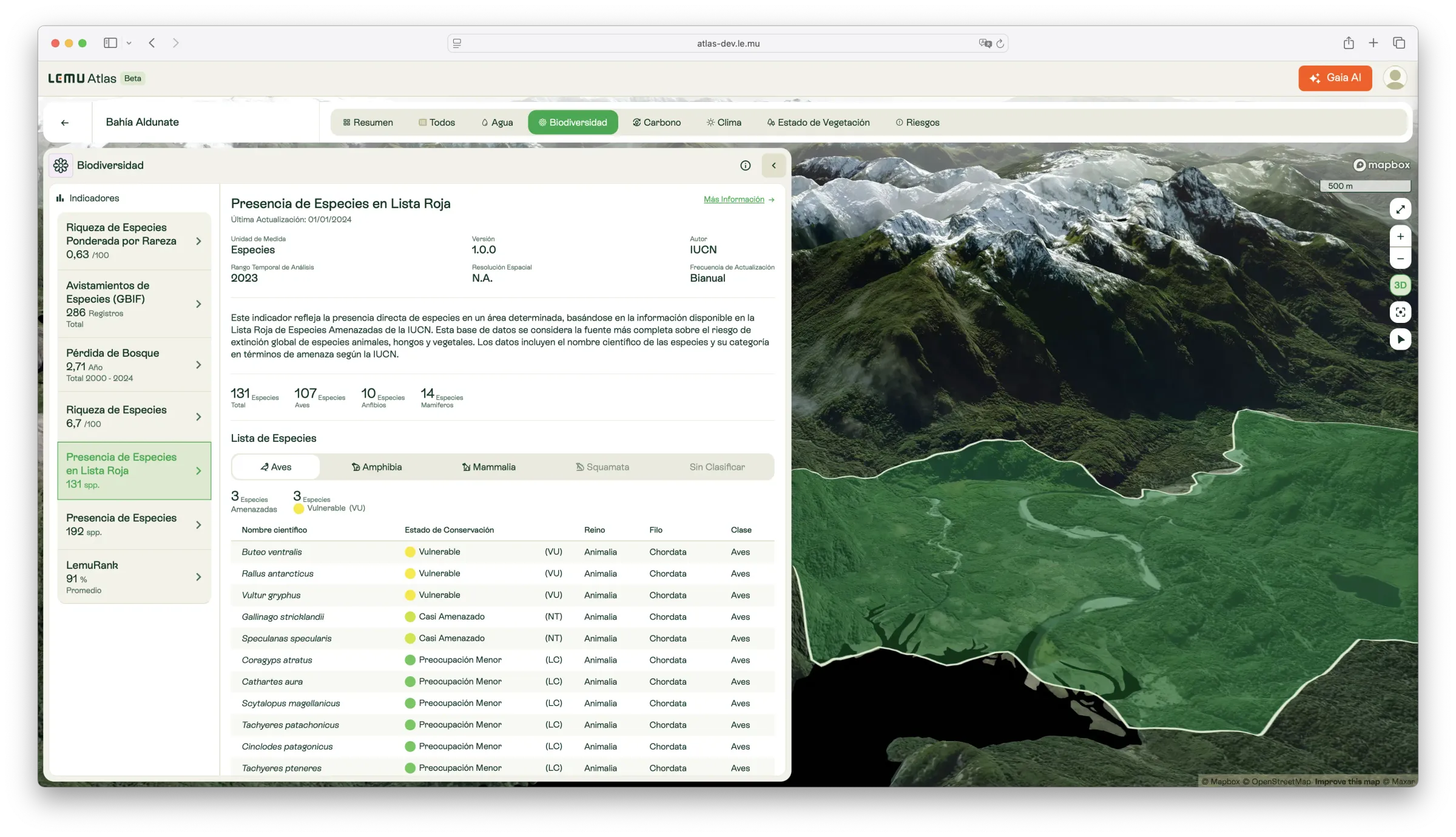Red List Species Presence
Direct presence of species in a given area, classified by extinction risk categories from the IUCN Red List of Threatened Species.

Description
This indicator reflects the direct presence of species in a selected area based on data from the IUCN Red List of Threatened Species. It reports which species occur within the area, their conservation status, and characteristics such as endemism.
The IUCN Red List is recognised as the world’s most comprehensive source on the global extinction risk of animal, fungal, and plant species. While not all species are yet assessed, and some lack sufficient data, it remains the most authoritative reference for extinction risk worldwide.
What it measures
- Presence of species from the IUCN Red List in the area of analysis.
- Conservation status by threat category:
- DD: Data Deficient
- LC: Least Concern
- NT: Near Threatened
- VU: Vulnerable
- EN: Endangered
- CR: Critically Endangered
- CR(PEW): Critically Endangered (Possibly Extinct in the Wild)
- CR(PE): Critically Endangered (Possibly Extinct)
- EW: Extinct in the Wild
- EX: Extinct
How to interpret
- A greater number of species in higher threat categories indicates higher conservation concern.
- Presence of threatened species highlights priority areas for protection and monitoring.
Unit / Scale
Species (count of species present, classified by IUCN threat category).
Temporal coverage: 2023.
Update frequency: Biannual.
Author / Source
International Union for Conservation of Nature (IUCN).
🔗 https://www.iucnredlist.org
📄 IUCN. (2023). The IUCN Red List of Threatened Species. Version 2023-2. International Union for Conservation of Nature.
Applications in Atlas
- Identify species of conservation concern present within project or reserve areas.
- Support prioritisation of management and restoration activities.
- Inform reporting for biodiversity frameworks and conservation standards.
- Highlight areas contributing to global biodiversity goals.